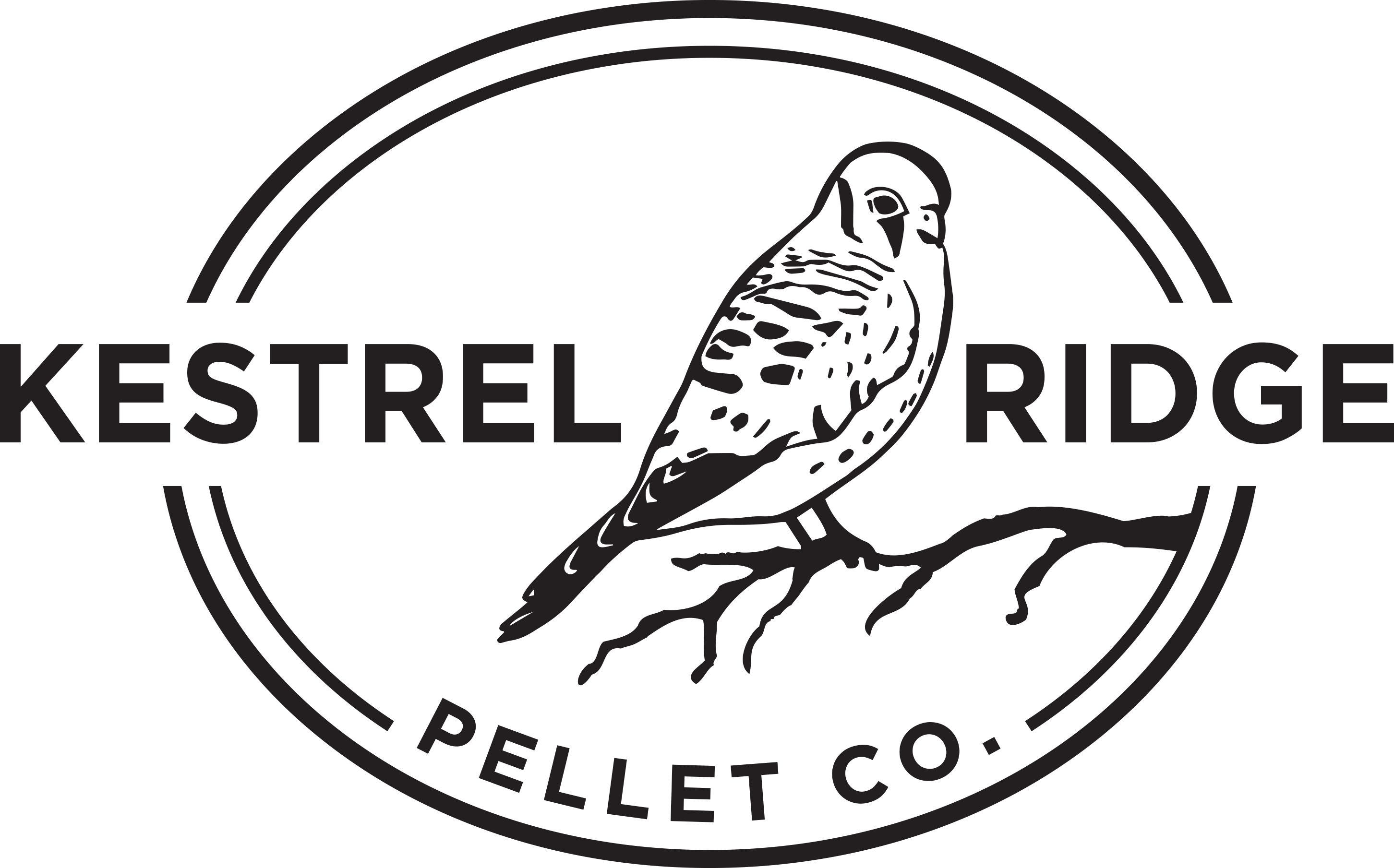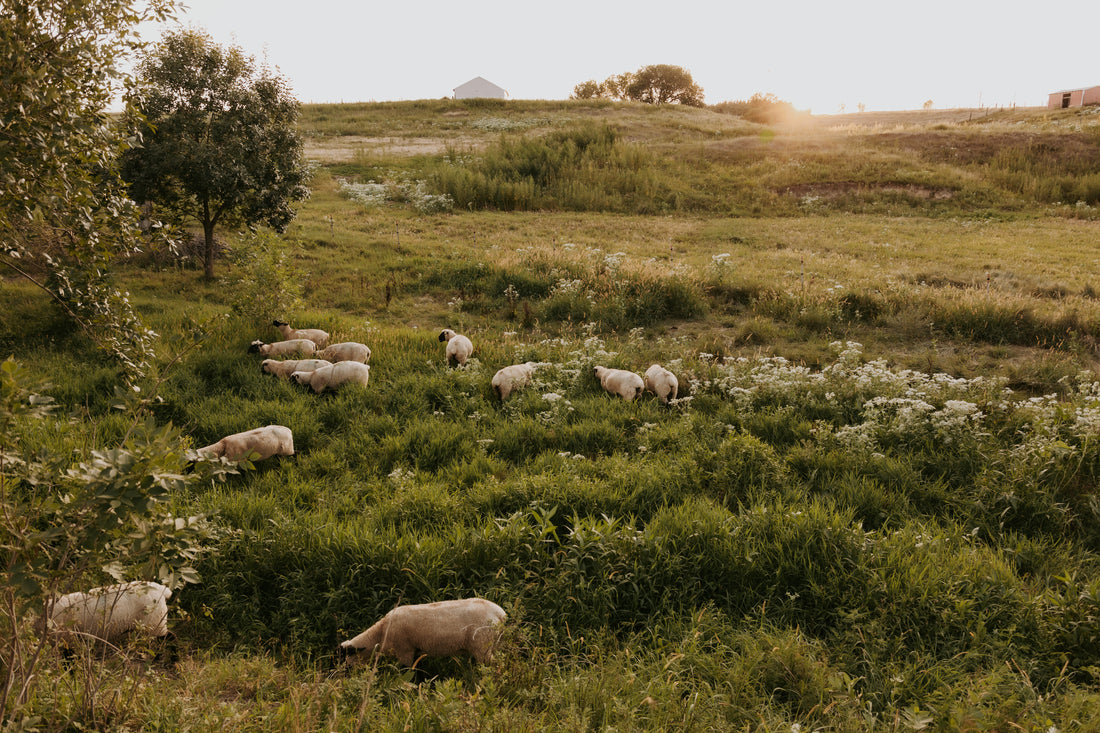So you might be wondering why I don't just use the wool I source to make clothing and yarn. The fact of the matter is that most sheep in the Midwest don’t grow fine wool needed to make those high-quality fabrics. Local ranches get most of their revenue from lamb sales, not wool. A sheep fleece can be deemed unfit for clothing or yarn because of a few factors:
- Too coarse - wool is graded based on its fiber diameter, measured in microns. The lower the microns, the finer the wool. The sheep around me have a high fiber diameter which means that their wool is coarse and would be too itchy to make into clothing or yarn that would come in contact with your skin.
- Too much vegetable matter - sometimes too much bedding material, hay, seed heads, and/or manure gets on the sheep's fleece and it would be too much work to skirt the fleece and get all that unwanted material out. A good fleece can get ruined with one trip through a patch of burrs. Our pelletized process heats up enough to kill any seed heads or heat treat any manure left in the fleece.
- Too short - a lot of the fleeces I receive are too short to be spun into yarn. The average minimum length need to spin into yarn is 3 inches.
- Darker fiber - darker wool doesn't take lighter colored dye colors well, so it may not be suitable for some items. It makes beautiful wool pellets though!
Nevertheless, these sheep still need to be shorn every year because their wool is continuously growing. However, in the traditional wool market, their wool is often of so little value that the price sheep producers sell it for usually doesn’t even cover the cost of shearing. I’ve heard of producers trying to bury or burn their wool because they thought that was the only option. It's disheartening because wool is truly a remarkable fiber that has many beneficial properties beyond clothing and the sheep work hard to grow that fleece. I knew something had to change, so I created an outlet for this second-rate wool. My solution is simple, yet effective: WOOL PELLETS!
 I purchase this underutilized wool at a higher price to create a market for it and to help offset the cost of shearing for the sheep producers. I then process this wool into pellets that can easily be applied as a renewable, all-natural plant soil amendment/fertilizer. Wool pellets provide a renewable, all-natural, and local source to nurture plants of all shapes, sizes, and purposes.
I purchase this underutilized wool at a higher price to create a market for it and to help offset the cost of shearing for the sheep producers. I then process this wool into pellets that can easily be applied as a renewable, all-natural plant soil amendment/fertilizer. Wool pellets provide a renewable, all-natural, and local source to nurture plants of all shapes, sizes, and purposes.
When mixed into the soil, wool pellets:
- Hold more than 3 times their weight in water. This reduces the frequency you need to water plants, which is vital during times of below average precipitation.
- Slowly release nitrogen, potassium, and other important micronutrients for plant growth and health
- Repel slugs and snails
- Biodegrade in about 6 months
Learn how to use wool pellets in your garden or potted plants here. Read about the effectiveness of wool pellets as a fertilizer here.
In addition to using wool from our own sheep flock, I am fortunate to work with a sheep shearing crew right down the road to source my wool, so all my wool comes from within a 200-mile radius of our ranch based in south central Nebraska. Sourcing local wool reduces the carbon footprint due to transportation while ensuring money is kept in the surrounding rural economies.
Keep your plants happy and support the American sheep industry, a win-win! You can purchase our wool pellets at krpelletco.com, we can ship throughout the USA. Or if you have any questions, contact us at krpelletco@gmail.com.
My best,
Megan ❤

